“People say sometimes that Beauty is superficial. That may be so. But at least it is not so superficial as Thought is. To me, Beauty is the wonder of wonders. It is only shallow people who do not judge by appearances. The true mystery of the world is the visible, not the invisible.” -Oscar Wilde
Beyond the planet Earth, beyond all the stars in the night sky, and beyond the Milky Way galaxy, there's literally an entire Universe out there.
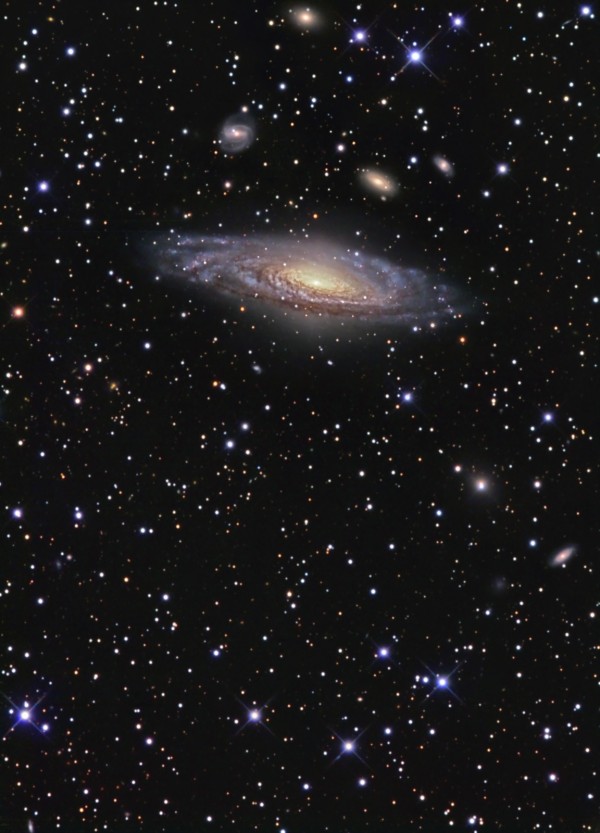 Image credit: R. Jay GaBany, of http://cosmotography.com/.
Image credit: R. Jay GaBany, of http://cosmotography.com/.
The farther away we're able to look, the more galaxies we're able to see. As far as our instruments have ever taken us, we've always found more and more galaxies filling up the darkest depths we've ever been able to peer into. Even the darkest, most devoid-of-light areas we can find, if we look for long enough, will eventually reveal these island Universes to our telescopes.
I can even show you the single most distant galaxy we've ever found: its name is UDFj-39546284. Its light has been traveling towards us for 13.4 billion years, it's currently around 33 billion light-years away, and all the matter in the Universe was a mere 370 million years old -- or just 2.6% of its current age -- when light was emitted from it.
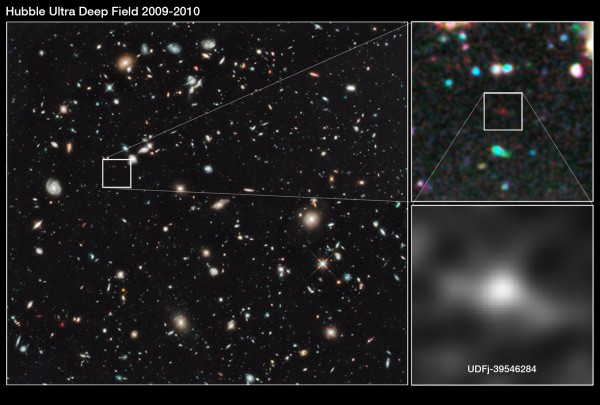 Image credit: NASA, ESA, G. Illingworth (University of California, Santa Cruz), R. Bouwens (University of California, Santa Cruz, and Leiden University) and the HUDF09 Team.
Image credit: NASA, ESA, G. Illingworth (University of California, Santa Cruz), R. Bouwens (University of California, Santa Cruz, and Leiden University) and the HUDF09 Team.
But that's just the current record holder. Our list of distance records is constantly changing, because the reality is this: we haven't yet detected the first stars or galaxies in the Universe. Our instruments -- so far, at least -- simply haven't been built for it.
This may seem counterintuitive to you, after all. Should you just be able to point your telescope at a location in the sky, and if you point it for long enough, gathering enough light, shouldn't you eventually see something if there's something there?
That is, after all, something we've done with the Hubble space telescope, and one of the ways we've discovered some of the current cosmic record holders. But there's an intrinsic limit to what something like the Hubble space telescope is going to see. And unfortunately, it has nothing to do with where the most distant galaxy is.
Telescopes, like any instrument, are limited by the laws of physics. In the particular case of a telescope, it's limited by the size of the primary mirror -- or the telescope's light-gathering-power -- and the wavelengths of light that its instruments can detect. You have to pick a wavelength; if you just "get everything", you'll simply be swamped by the strongest signal out there. And as you may have guessed, objects have very, very different appearances and properties when you look at them in different wavelengths.
What does this have to do with distant galaxies? It turns out that galaxies in the very early Universe aren't expected to be all that different from galaxies today. They'll still be powered by stars, the vast majority of stars will still be fusing hydrogen into helium in their core, and they'll still give off light the way the vast majority of stars do today. This should be true whether the Universe is 10%, 1%, or even just 0.01% of its current age!
Except for minute details, stars and galaxies work pretty much the same way at all times and at all distances.
But even though the sources of light aren't all that different from the ones nearby, they have a hell of a journey to make in order to reach us. For one, the Universe is expanding, meaning that the farther away a galaxy is, the more the light will be stretched, or redshifted, due to the expansion of the Universe. The longer the light has to travel in order to reach our eyes, the more time the expansion of the Universe has to affect the wavelength of all the photons coming from it, as this video from Rob Knop, below, demonstrates.
I'll tell you so what: so if you're looking for visible light for an object that's really, really far away, you're only going to see the light that was in the ultraviolet when it was emitted! All the visible light you were looking for? That's been shifted into the infrared. So with Hubble -- a telescope that was designed for visible light observations -- you're very limited as far as what you can see.
But things get even worse at very large distances.
You see, the Universe, for the first few million years, didn't consist of any stars at all. It was simply, once it expanded and cooled enough to form neutral atoms, just full of those boring, neutral atoms. It took many millions of years for gravitational contraction to work well enough for the first stars to form, and when they finally did, their starlight had this terrible problem: any direction it tried to go in, it would simply run into neutral atoms. If that's the light we're interested in seeing, we've only got two options.
But the fact that many, many redshifts conspire together with neutral hydrogen means that practically all of the light is gone by time it gets to our eyes. The ultraviolet light is gone, the visible light is gone, and even most of the infrared light is gone by time it gets to us. The Universe becomes reionized at only about a redshift of 6, while the first galaxies were probably forming between redshift 20-and-30, and the first stars between redshift 50-and-75.
As a result, all the light you'd expect to see above a certain wavelength is effectively "cut off" by this intervening neutral hydrogen, and this cutoff is known as the Gunn-Peterson trough, which is clearly visible in the highest-redshift quasars shown below.
So, we can build a better-and-better infrared telescope to look for these at higher and higher redshift, and we'll be able to catch progressively earlier and earlier objects. This is the plan for the James Webb Space Telescope, which will be about 100 times more sensitive than Spitzer, currently the record holder for most sensitive infrared telescope of all time. (For more on James Webb, see here.)
But that won't be perfect, not by any means. If we wanted to truly reach the first objects, we'd have to use a trick that, technologically, we're just not ready for.
Option 2: we can take light that starts in the infrared, because infrared light is pretty much immune to neutral hydrogen! So that light can leave our very first stars and galaxies, pass through the intervening neutral gas undisturbed, and eventually reach our eyes, redshifted even farther into the infrared, so far that it's almost (but not quite) into the microwave region of the spectrum!
It's good that we're not in the microwave region of the spectrum, to be honest, because there's a cosmic microwave background that would make this light totally undetectable.
But, could we see this far-infrared light from the early Universe?
Unfortunately, there is a cosmic infrared background, too, and right now we don't know how to technically deal with it.
Where does this infrared background come from? Believe it or not, the same neutral hydrogen that's so transparent to infrared light is also very good at absorbing UV and optical light.
"So what?"
Well, like all matter, it's going to re-radiate that energy away again, and when it does so -- just like the Earth does -- it radiates it away in the infrared. So the same neutral hydrogen that's transparent to infrared light is also a tremendous source of infrared light.
And right now, we don't know -- even in principle -- how to extract a signal from the truly first stars against this cosmic infrared background.
So when I hear about the newest big news from the distant Universe, or someone asking how far away the farthest galaxy is, it's great that we're taking another step forward in our understanding. But let's not pretend we've got the very first one of anything; we've still got a long way to go to get there! The most distant galaxy in the Universe is out there, but we're going to have to really make an investment if we want to find it!
- Log in to post comments

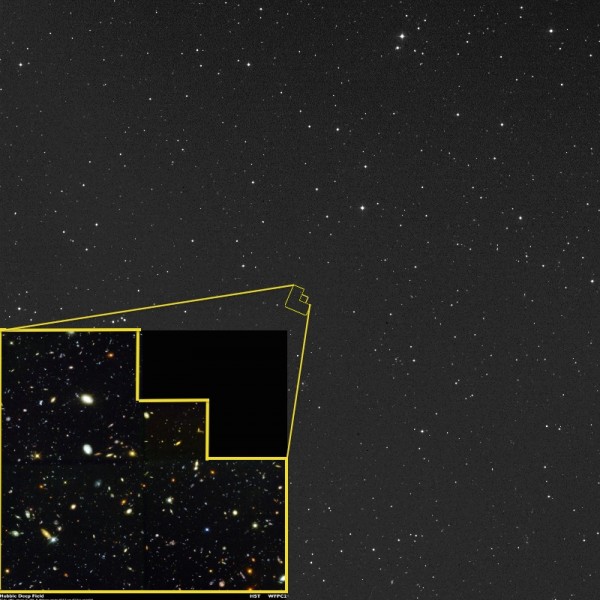
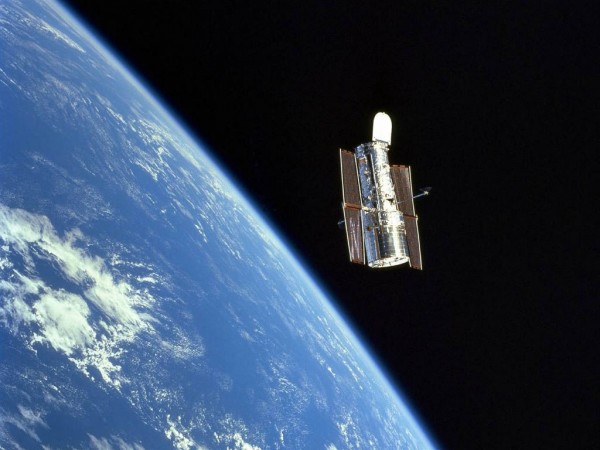
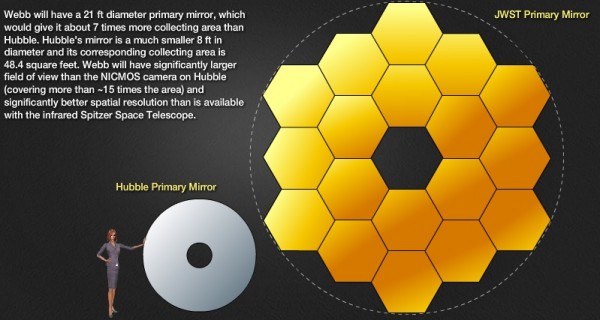
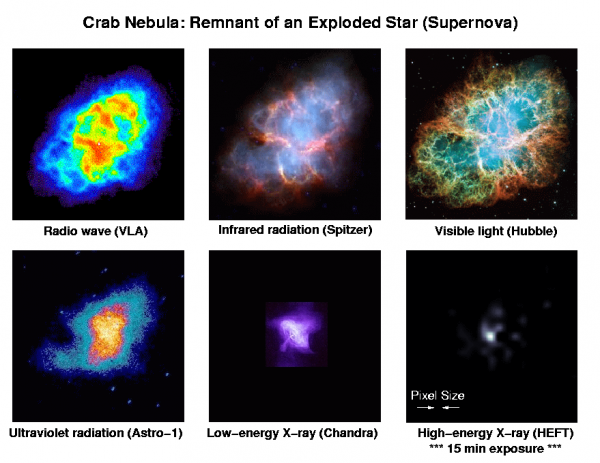
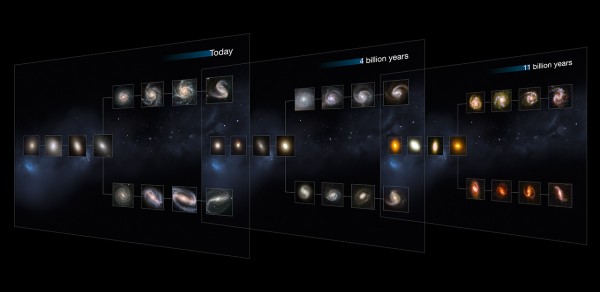
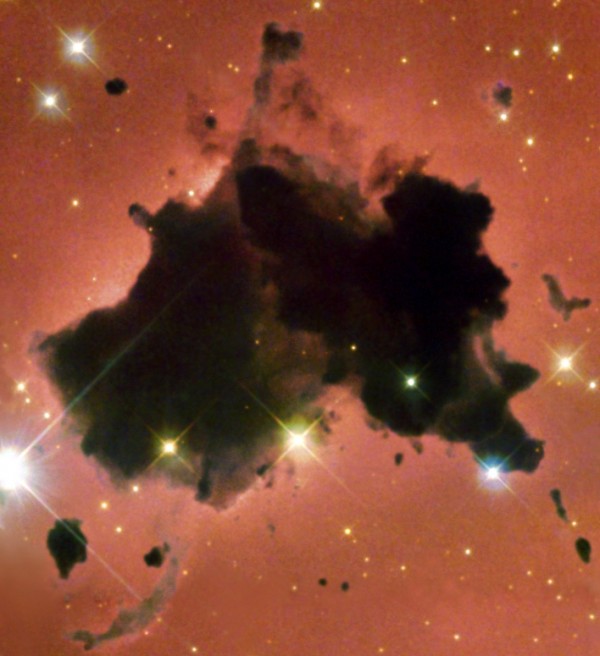
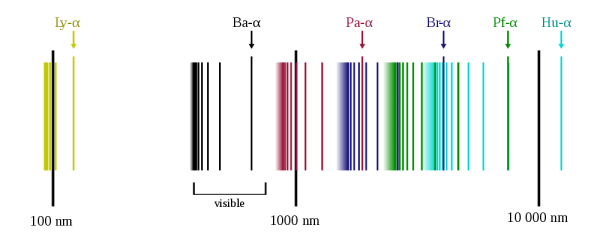
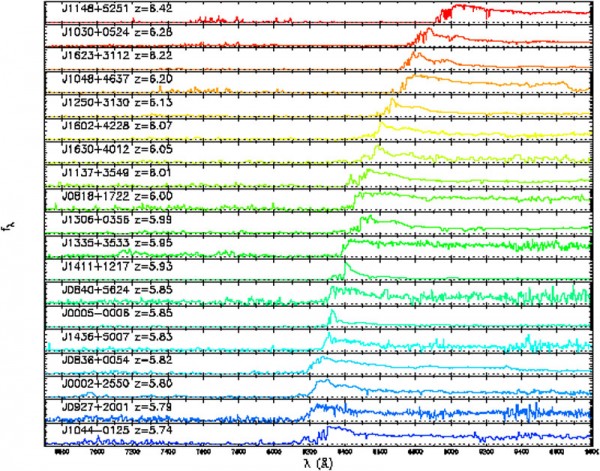
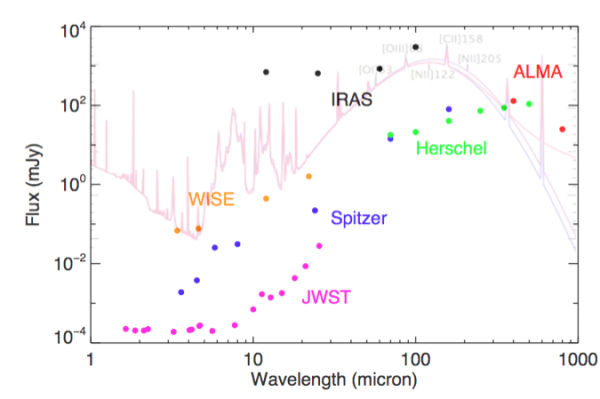
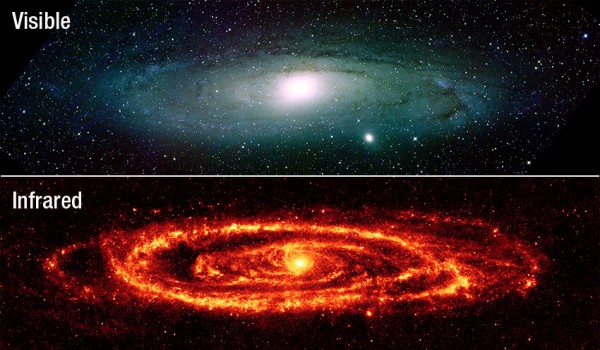
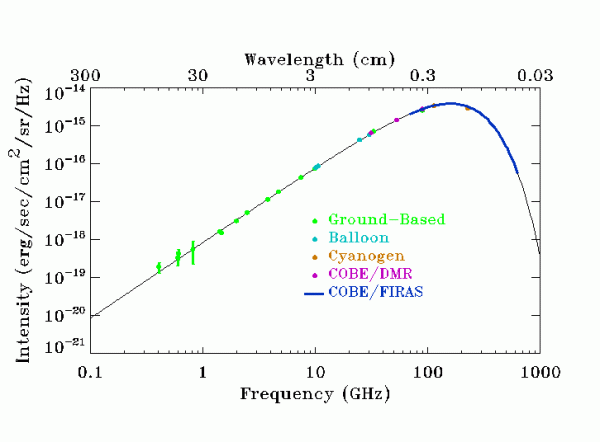
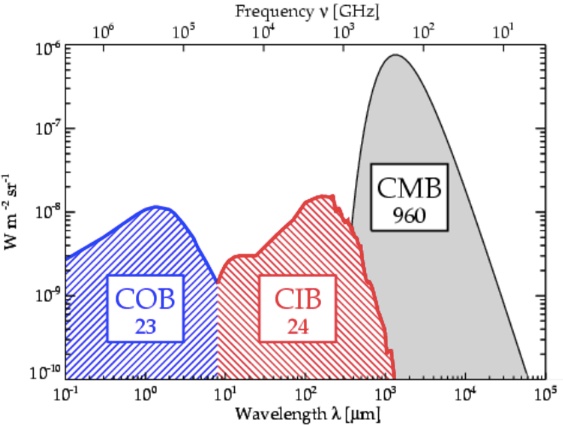
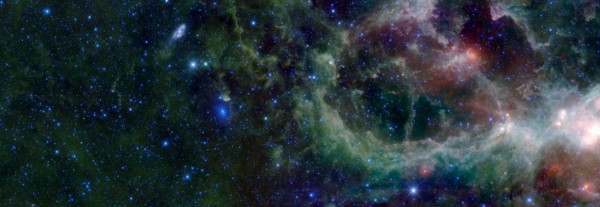
That is why I assert: the galaxies in our space are the atoms (nuclei) in the over space, where similar to our space exist chemical stuffs, over planets, over stars and soon. Is it endlessly and if it so what is the meaning of all this? You can see the answers and many more in Q&A USM www.kanevuniverse.com
Ethan,
You said that for us to SEE the light from the distant stars, it had to start out as ultravolet light - because of red-shifting, of course - but what if there was no red-shifting and we could SEE what was actually visible light when it started out - what would we see in each case? Would the kind and amount of information carried [and received by us] be same or different?
Forgive me if the question seems naive. Moreover, i may not have an exact grasp of the term "information", as it is used by the scientists, whence my confusion perhaps. Would appreciate if you could shed some LIGHT on it, in any case. :)
@ Nova
as per your first question. Take a look at i.e. SDO images (solar dynamics observatory) it takes images of our Sun. Both visible, IR, UV etc... look at the different images and you will see what each filter sees.
As for "information". The term is usually used either for GR where it states that no information can be transfered faster than speed of light. Or i.e. in discussions of entropy, where entropy can be described as the amount of information in the system. What is it? Well... information. Think bits in computers. Doesn't matter what that information is, it's there. Same for physics. Information is everything... or maybe better to say that everything is information. Any property. Not only what we "see" or measure... anything. If you talk about information you are talking about a physical system that is described and governed by some pieces of information.
Hope this helps.
- and to think that many people consider Earth as the only populated planet in the universe! From a mathematical and philosophical standpoint the universe must be teeming with life - what on earth (no pun intended) is it all there for, if not life?. They may be too far apart to communicate - ever, but I for one, am convinced that we cannot possibly "be alone." It's a very strange thought that there must be other beings in existence. As a chemist I appreciate that only carbon has the ability to catenate to any sort of complexity required by life, so one can speculate that other beings may well resemble life forms on earth - past and present. Perhaps when we die, we reappear on a different planet in a different galaxy. Now there's a comforting thought.
Maybe not too far apart to communicate, in a very slow, lengthy way. (This is SF stuff, of course.) Thinking of the transit method of planet detection, I wonder if it would eventually be plausible to place large enough artificial satellites (or nudge asteroids?) into just the right orbits to set up something akin to Morse code?
I hope Ethan will some day explain the many issues that always confuse me, when talking about the expansion of space. Now, the universe at age 370Myr or 2,6% of present age the universe is presumably also 2,6% of the present size (or is/was it?). Then there is this galaxy 33Bly distant that was 0,86Bly away at that time. The galaxy emits radiation that takes 13,4Byr to reach us as the galaxies speed away from each other AND more space appears magically in between us. What are we/you actually saying is happening here? Especially if this appearance of extra space happens at non-constant rate, if we consider the inflation theory. The lightwaves get stretched (excluding the initial doppler-effect), now how is this different from the "tired light"-theory? What happens to time?
I confess I am totally unable to do the relativity calculations, but many things concerning the questions above seem rather counterintuitive. Then again, many other things involving relativity seem that way.
psweet,
Would it not just be easier to use a radio (or other electromagnetic wave) signal to communicate? We can certainly broadcast it out into space omnidirectionally so that any intelligent life with the right technology could detect it (at least as long as they are close enough for the signal to be strong enough to detect). Your method actually does this anyway; to see the satellite or astroid requires a visible light signal passing from the sender to the receiver. Why bother to manipulate the astroid or satellite to generate the signal when we can just send a signal directly?
We currently have the technology to send just such a radio signal out into space. Why then are we not doing so? My own opinion is that we would rather look for signals from other planets than send our own is that we get immediate results if we actually find a signal from another planet. If we send a signal, and the recipient is on a planet 100 light years away, it will take 200 years to see if it worked, 100 years for our signal to get there and 100 years for theirs to come to us. Most human scientists won't want to spend their whole life working on a project that they know from the beginning will not bear any results within their lifetime.
Given that, although I hate to speculate about the thought processes of a hypothetical alien race, what if other intelligent life thinks the same way? Maybe that's why we haven't seen any signals during our SETI project.
Mikko:
AIUI, no. While the expansion is constant, what that means is that the distance between any two objects inreases* at an accelerating rate. Sort of like a constant force gives you an acceleration. So you can't just do a linear extrapolation.
*ignoring for the moment any attraction via the four forces
Yep, they are initially counterintuitive. Human brains and senses have adapted to deal with kg-size objects moving at kph speeds. At much smaller and much larger scales, it appears that our naive intuitions are no good.
Our intuitions can, however, respond to training. I hate to sound like a pretentious physicist, but honestly the best way around the counterntuitivity problem is to learn to do the calculations. It may not help you to understand why nature behaves the way it does, but it will absolutely help you understand how things like relativity and QM work.
Physics is similar to a lot of other human activities in that the more you practice actually doing it, the more intuitive it becomes.
@ Mikko
it's a bit more complicated than that. And I will briefly try to point you. For detailed info, raise your sleeves and start reading wiki on relativity and expansion of the metric.
In short. There is no "more space" appearing magically. It's the metric that gets bigger as time passes. Metric, in GR, is a function of time. Think about this for a bit. As "clock" ticks, the value of the metric (of space) changes. (and in the case of our universe, it get's bigger). Einstein couldn't at first believe this (hence his cosm. constant). But later it was accepted. It's hard to explain what a metric is, to a layman. So I suggest, that if it really interests you, read up on it.
As for tired light... Expansion of metric is very different from tired light. On the surface nothing is wrong with tired light hypothesis. The only problem is that is predicts some things which we just don't observe. Hence.. the hypothesis is wrong.
The metric is what defines the distance between two points -- it makes sense if you think of the meaning of the common English definition of "metric" as in "a system of measurement". It's how you measure distance.
So the metric is basically some function F(A,B) = D where D is the distance between points A and B. If you had a flat plane, then the metric would be the simple Euclidean distance based on the x/y coordinates and the Pythagorean Theorem you're familiar with. If you were talking location on a sphere, then the metric would be the length of the great circle connecting the points. On an oblate spheroid like the planet earth it'd be slightly different. And so on.
In GR, the metric of space-time is variable. Distance changes in the presence of energy/momentum. A Cosmological Constant means that it would be increasing everywhere. So absent any other effects, points A and B would get farther apart over time. And since the effect of the Constant Constant depends on distance, which is increasing between A and B, they would be accelerating away from each other.
I'm not sure "more space" is an incorrect way to put it, since according to the metric there is "more space" as time goes on. It's not any more magical than the universe appearing to operate on the rules of GR in the first place, though.
@ CB
metric is much more than just distance from A to B.
" The metric captures all the geometric and causal structure of spacetime, being used to define notions such as distance, volume, curvature, angle, future and past."
"ds^2 = g_{\mu\nu}dx^\mu dx^\nu.\, In general relativity, the terms metric and line element are often used interchangeably. The line element ds^2 imparts information about the causal structure of the spacetime. When ds^2 0, the interval is spacelike and the square root of ds2 acts as an incremental proper length. Spacelike intervals cannot be traversed, since they connect events that are out of each other's light cones. Events can be causally related only if they are within each other's light cones..."
and so on.. so even to a casual study, metric is a bit more than just distance.
Yeah, that's true, it's also the angle between two lines. From which you can derive everything else (literally, by taking derivatives).
What something is and what you can learn from it once you start applying calculus aren't the same. I don't think the concept of the metric is too complicated where "Well, you'll have to go study it" is the best that can be done to explain how the metric relates to expansion of space-time to a layman.
CB, the metric is quite complicated when you try to explain the things that it does. E.g. the shift of wavelength. You have to take into account spacetime and special relativity to get that from the metric.
There's not a lot to it than has been said that "it's the distance between things that's expanded, not the things in the space that have moved". If you want something closer to the evaluation of the metric in GR Cosmology, then you need to get into the maths.
The idea of the metric is not complicated.
But if you don't get "the distance is increasing, not things moving in space" then there's nothing wordy that will work.
And, again, those claiming "I don't get it" are a bit like the bad guy in Big who says "I don't get it" not because it isn't clear, but they want to pretend that it's not. And in that case NOTHING will explain it to them since they aren't saying "I don't get it" because it's unclear.
You are correct CB, however the answer relates to Mikko's original question. And the answer is still no, there is no "more" space appearing. And metric is not pure distance.
The picture is not that of space just appearing up from somewhere in every point, like water rising from some well. That would violate some laws of conservation...
Instead what happens is that space gets stretched (not ideal analogy, but suitable). Metric gets bigger, and that effects existing spacetime in a certain away. You will agree that there is a big difference between stretching 1 meter of fabric vs 4 meters "magically" appearing from somewhere.
And this is tied to his second question about tired light. Photon doesn't interact with anything (as opposed to tired light), it's wavelength is stretched because it's part of the fabric of spacetime. If we were big enough.. we would also be "stretched".
That's the difference. It's not that there is just more space between A and B. The whole grid is stretching onto itself, and everything is part of that grid. Other forces compete of course... etc...etc.
Note, CB, that your attempts to explain it have not been assimilated by Mikko.
So it's either still more complicated than your explanation, in which case either SL is right or you need to prove him wrong by giving an explanation that works. Or it wasn't a genuine "Please explain", more a "I don't understand, therefore the only answer is 'Goddidit'".
I don't know how you can say that since they haven't replied again. For that matter how do you know SL's, or eric's explanation has had no effect? Saying what is logically the same thing in a different way, or going into a bit more detail on what is being said, can make a difference. Assuming that because they are confused by one explanation that they always must be is unwarranted.
That said I'm not hopeful, in particular that my explanation was good enough to make such a difference. Even assuming it isn't a "qedgoddidit".
Wow,
Just a minor correction: usually it's more like "I have no desire to understand your scientific nonsense. It contradicts my religious beliefs and therefore goddidit."
I assure you I have no ideas or wacky theories of my own to endorse, least of all the "goddidit". My less noble motive is to get some understanding, without having to do the PhD on physics. Or, at the moment, without having to brush up my college maths, now long forgotten due to disuse. (Sorry eric!)
In fact I found many of the replies quite enlightening, especially those of CB and Sinisa Lazarek.
So, CB, you are actually saying that if anything exists, it´s going to expand ("Distance changes in the presence of energy/momentum.")?
Returning to the original question: I was aware of the acceleration of the expansion, but as that was a minor point to me I just skipped it. That only means that the galaxy in question was even closer to us at 370 Myr. So light has travelled ½x(the present distance - the original distance) + (the original distance) = 16,5+ Bly in 13,4Byr, which makes the average speed faster than light. So the expansion does something to time, but I am at loss to understand what and how.
A remark of Sinisa about the photon
"it’s part of the fabric of spacetime"
was interesting to me. I once said to an acquaintance of mine, (an astronomer, by the way): "I wander about the photons. They exist to us, but they don´t exist to themselves. As they travel at the speed of light, no time passes, so they die at the same moment they are born." He just replied: "I haven´t thought about it."
Only, I thought photons do interact ("Photon doesn’t interact with anything") by knocking electrons to higher energy states etc.
Not everything causes expansion, but it does cause some kind of change in the metric, which it may be more enlightening to say defines the geometry of space-time. Most things you're familiar with change the metric in such a way as to create the phenomenon of gravity -- you may have heard that in General Relativity, gravity isn't a "force" per se but the effect of the geometry of space-time.
The Cosmological Constant is the energy density of the vacuum. So it behaves differently than other energy.
Sorry I can't answer your other question. Figuring out how the expansion of the universe relates to how far the photon has travelled according to our reference frame in which time has passed and therefore the photon has experienced the expansion of space is more complicated than that. I'm confident that if it was worked out properly that the photon will be found to have travelled approximately 13.4B lyr.
What Sinisa meant was that the red shift of photons we observe from distant galaxies is not due to them interacting with things on the way here, but the expansion of the space they are travelling through. Obviously they have to interact with things for us to see them once they get here. :)
P.S. Don't take any "goddidit" comments personally. This forum (like so many physics and other science forums) gets a LOT of the "No it's all my miracle theory of space bunnies" and "It has to be wrong because the Bible" types. And especially the latter usually start out in stealth-mode acting like they're just curious. So there's a lot of well-conditioned knee-jerking. :P
@ Mikko
about photon not interacting... of course it interacts in everyday terms. Light doesn't pass through my walls. I meant it doesn't interact with anything in terms of it's redshift (vs tired light).
Tired light states that the redshift is due to photons loosing their energy through interactions with other things. And like I said, it's disproven because it would cause scattering etc.. which we don't observe when watching distant galaxies.
As for distances.. check wiki, astronomy uses several distance measures for exactly the reasons that confuse you. There is expansion which is due to the metric, and then there's an accelerated expansion that's due to dark energy or inflaton field or however you want to call it.
p.s. as for faster than light... numbers aside.. given enough distance, due to the expansion, some things will appear... key word.. appear... to be moving away from us faster than the speed of light. But they aren't actually. To them, we appear the same way. That's relativity to you, and metric.
To be quite honest, to me at least this whole universe dynamic is scary. I mean.. the whole notion of a mathematical formula that appears to be at work in reality is just mind bending.
Seriously.. there's this mathematical creation called metric.. which does certain things.. and by things governed again by mathematics.. that value of that formula gets a bit bigger as you change time parameters in the formula... ok.. then you look outside and this whole of creation which you are a part of does that.. in realtime.. why? it's so bizzare.. yet observations seem to nail it. I would be much less concerned if it was just length i.e. oh well.. a meter will be a bit more every million or so years.. oh well.. but metric is much more subtle.. it effects everything. That the Universe actually behaves like that, and why is it like that is amazing.
Dear Ethan,
quite a pleasure to read, thank you. Could you maybe sometime write an article about how data aquisition looks like and raw data is processed in astrophysics? How can you even get a spectrum for each pixel such faint galaxies, you would need at least one photon or each frequency, wouldn´t you`?
cheers
I love this!!!! Ever since i can remember my first conscious thought, i have been enthralled with space and our origins from it. However, there has always been one question that i have never had answered or vaguely touched upon in any document or blog or website i have ever visited. and that question is, are we sure we are looking in the right direction? I KNOW we BELIEVE we are, but i cant shake the feeling that for every minute direction we adjust these telescopes and look as deep as possible into Outer? Inner space?( again its directional. How can we be Sure we are looking to the point where it all began?
Pardon my ignorance or naivety if i have missed something simple.
P.S. i still love it and will continue to read.